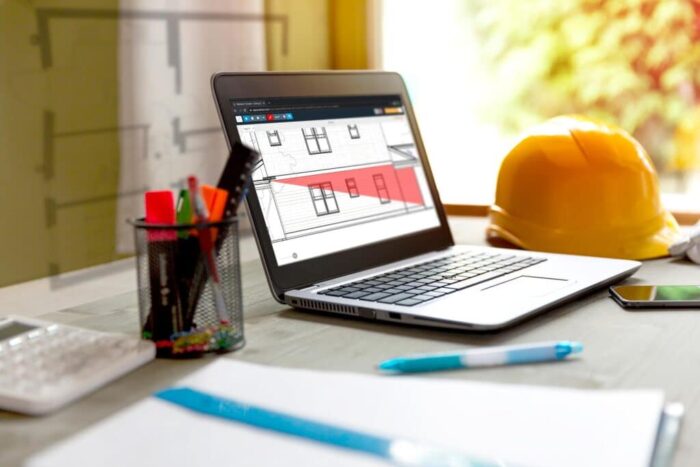
In the dynamic world of construction, the ability to produce accurate and reliable estimates is the linchpin of success for projects of all sizes. Estimating construction costs involves a complex interplay of variables, including materials, labor, equipment, and overheads. With the stakes so high, the reliance on traditional, manual methods of estimation is increasingly being supplanted by sophisticated software solutions. These digital tools not only enhance accuracy but also save time and reduce the risk of costly errors.
The Evolution of Estimating Tools
The journey from pen-and-paper calculations and spreadsheet-based estimates to advanced software applications marks a significant evolution in construction technology. Initially, the industry’s hesitance to adopt new technologies stemmed from a mix of tradition and the perceived complexity of software solutions. However, as digital tools became more user-friendly and tailored to the specific needs of construction professionals, their adoption accelerated. Today, construction estimating software is an indispensable tool for contractors, project managers, and estimators alike.

Understanding Construction Estimating Software
Construction estimating software is designed to facilitate the process of calculating the total cost of a construction project. These tools incorporate functionalities for quantifying materials, determining labor costs, accounting for equipment usage, and including any other expenses related to the project. The software often features databases of cost information and can adjust estimates based on variables such as location, project duration, and market conditions.
Bolster Built: A Leading Solution
Bolster Built emerges as a notable player in the construction estimating software arena, distinguished by its comprehensive approach to project estimation. It caters to a wide array of construction professionals by offering a user-friendly interface, integrated databases of material and labor costs, and the flexibility to adapt to various project types. Bolster Built’s commitment to accuracy and efficiency makes it a preferred choice for those seeking to streamline their estimating processes.
Criteria for Choosing the Right Tool
Selecting the right construction estimating software requires a careful assessment of several key factors. The size and complexity of your projects, the level of detail required in your estimates, integration capabilities with other software, user interface design, and cost all play pivotal roles in the decision-making process. Additionally, considering the scalability of the software ensures that it grows alongside your business needs.

Features to Look For
When evaluating construction estimating software, certain features stand out as particularly beneficial. The ability to create detailed and customizable reports, real-time collaboration tools for team members, and the integration of project management functionalities can significantly enhance the software’s value. Moreover, cloud-based solutions offer the advantage of accessibility from any location, facilitating remote work and on-site adjustments.
Popular Construction Estimating Software Options
Apart from Bolster Built, several other software solutions have earned recognition in the construction industry for their robust estimating capabilities:
ProEst: Known for its cloud-based platform, ProEst offers versatility in estimating, bid management, and project management, making it suitable for construction firms of various sizes.
PlanSwift: This tool is favored for its user-friendly interface and the efficiency it brings to the takeoff process, allowing users to quickly and accurately calculate quantities from digital plans.
RSMeans Data Online: A product of Gordian, this software is revered for its comprehensive database of construction costs, updated regularly to reflect current market trends.
Sage Estimating: Sage offers a solution that is highly integrative with other construction management software, providing a seamless workflow from estimating to project completion.

Integration with Other Systems
The capacity for a construction estimating software to integrate with other systems, such as project management, accounting, and customer relationship management (CRM) software, is crucial. This interoperability facilitates a seamless flow of information across different stages of the construction process, enhancing efficiency and reducing the risk of data silos.
Training and Support
Adopting new software comes with its set of challenges, making the availability of training and support a significant consideration. Providers that offer comprehensive training programs, user communities, and responsive customer support ensure that users can maximize the software’s potential and address any issues promptly.
Navigating Software Trials and Demos
Before committing to construction estimating software, it’s wise to explore trials and demos offered by the providers. These test runs allow you to gauge the software’s compatibility with your workflow, understand its features, and assess its ease of use. Engaging with the software firsthand can reveal invaluable insights into how well it aligns with your specific needs, enabling a more informed decision.

Emphasizing Data Security and Compliance
In an era where data breaches are increasingly common, the security features of construction estimating software cannot be overlooked. Ensuring that the software complies with industry standards and regulations for data protection is paramount. Additionally, evaluating the provider’s commitment to data security, including encryption, backup systems, and user authentication protocols, is crucial in safeguarding sensitive project information.
Customization and Scalability: Tailoring Software to Fit Your Needs
In the realm of construction estimating software, one size does not fit all. The ability to customize the software to meet the unique demands of your projects and business model is a critical factor. Customization can range from modifying report templates and cost databases to creating user-defined fields and workflows. Furthermore, the scalability of the software is vital as your business grows and your project complexity increases. A solution that scales with your business ensures that you won’t outgrow your software, avoiding the need for frequent changes and retraining, which can be both disruptive and costly.
Future Trends in Construction Estimating
The future of construction estimating software is marked by the integration of advanced technologies such as artificial intelligence (AI), machine learning, and building information modeling (BIM). These innovations promise to further enhance the accuracy of estimates, automate repetitive tasks, and provide deeper insights into project feasibility and risk assessment.

End Note
Choosing the right construction estimating software extends beyond comparing features and pricing. It involves a holistic assessment that includes exploring trials and demos, understanding integration capabilities, evaluating data security, and considering future technological trends. From Bolster Built’s comprehensive estimating solutions to specialized tools like ProEst and PlanSwift, the options are vast. However, the decision must be guided by an in-depth understanding of your projects’ specific requirements, workflows, and long-term business goals.











